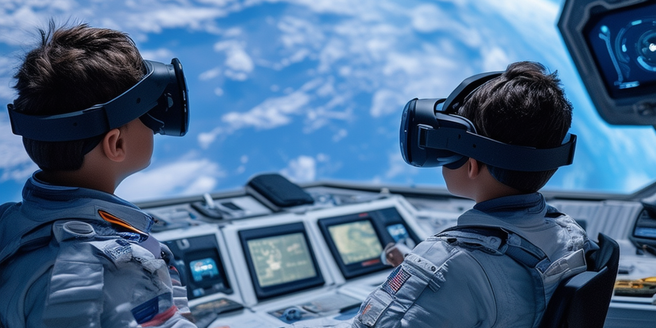
Introduction to Augmented Reality in Education
Augmented Reality (AR) is transforming the educational landscape by integrating digital information with the real-world environment. Students and educators can now interact with 3D objects, immersive scenes, and detailed simulations, making learning more dynamic and engaging. For instance, AR can bring historical landmarks into the classroom, allowing students to explore and analyze them in a hands-on manner. Additionally, it provides opportunities for virtual field trips to places otherwise inaccessible. Teachers can use AR to create customized and interactive lesson plans tailored to individual learning styles. This technology not only enhances visualization but also fosters a deeper understanding of complex subjects. As AR becomes more accessible, its integration into education promises to revolutionize traditional teaching methods, making learning more interactive and impactful.
Benefits of Augmented Reality for Students and Teachers
Augmented Reality offers numerous benefits to both students and teachers. For students, AR provides a more engaging and interactive learning experience, which can increase motivation and improve retention of information. It allows for personalized learning, where students can learn at their own pace and style. With AR, field trips and lab experiments can be simulated, making learning more comprehensive. For teachers, AR can be a powerful tool to explain difficult concepts and offer visual representations that are otherwise impossible in a traditional classroom. Additionally, AR can facilitate better cooperation and interaction among students, promoting a collaborative learning environment. It also offers new assessment tools, enabling educators to track progress and tailor instructions accordingly.
Popular Augmented Reality Tools and Applications
There are several popular Augmented Reality tools and applications that are being widely used in educational settings. Applications like Google Expeditions allow students to take virtual field trips to distant locations and explore them in 360 degrees. These immersive experiences can make learning more engaging and memorable. Apps such as AR Flashcards make learning fun by transforming study materials into interactive 3D models. Programs like Merge Cube enable students to explore complex scientific models by holding them in their hands. Moreover, platforms like Zspace provide interactive 3D experiences for various subjects, including science, math, and geography. These tools are not only accessible but also effective in enhancing the learning experience through immersive, hands-on activities.
How to Implement Augmented Reality in the Classroom
Implementing Augmented Reality in the classroom involves several crucial steps. First, it is important to acquire the necessary AR tools and devices, such as tablets or smartphones equipped with AR capabilities. Next, educators should familiarize themselves with the available AR applications and resources that align with their curriculum. Planning lessons that integrate AR activities can help in effectively incorporating this technology into the learning process. Furthermore, establishing a support system for troubleshooting technical issues can ensure smooth operation during lessons. Additionally, teachers should encourage students to use AR for projects and presentations to foster creativity and deeper engagement. Training and professional development sessions can also be beneficial for educators to stay updated on the latest AR advancements and instructional strategies.
Future Trends in Augmented Reality for Education
The future of Augmented Reality in education looks promising, with several trends set to shape its evolution. One emerging trend is the development of AR glasses and headsets, which will offer more immersive and hands-free learning experiences. Additionally, educators are exploring how AR can be integrated into traditional classroom settings to complement existing lesson plans. Another trend is the use of AR in remote and online learning environments, providing interactive and engaging content for students who are not physically present. The integration of artificial intelligence with AR applications is also on the horizon, allowing for more personalized and adaptive learning experiences. As AR technology advances, it will continue to break down barriers and create new opportunities for enhanced educational experiences across various disciplines.
